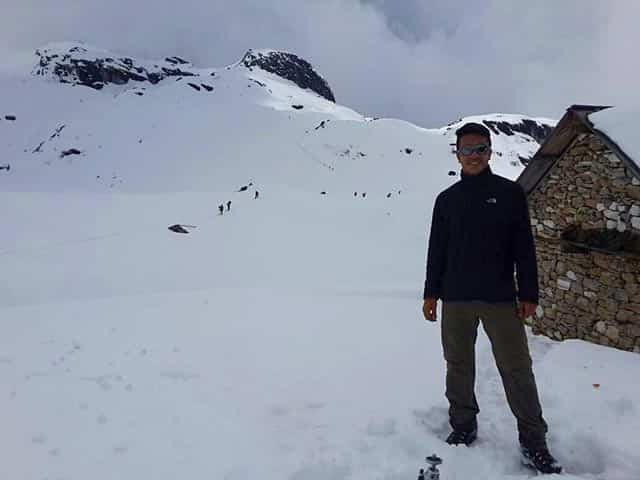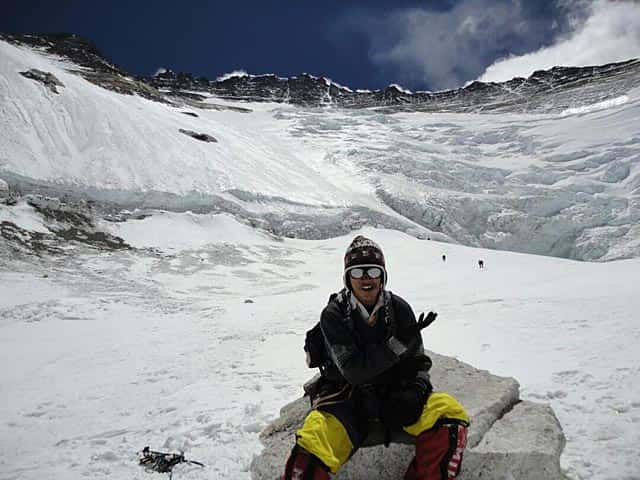Nepal quake: I saw the Himalayas dance, says mountaineer Arjun Vajpai
It was his third attempt at Mount Makalu (8,463 metres/27,800 feet), the fifth highest peak in the world. Unforeseen incidents and poor weather conditions stopped him in his previous two attempts in 2013 and 2014. This time around, nature played a bigger and bitter game – it shook his will and dream through a 7.9 magnitude earthquake.
It was his third attempt at Mount Makalu (8,463 metres/27,800 feet), the fifth highest peak in the world. Unforeseen incidents and poor weather conditions stopped him in his previous two attempts in 2013 and 2014. This time around, nature played a bigger and bitter game – it shook his will and dream through a 7.9 magnitude earthquake.

Arjun Vajpai, India’s youngest Everest summiteer and the only Indian on Makalu this year, returned home eight days after the earthquake shook the world and devasted Nepal.
Arjun soon became the only source of information about the climbers stranded on the mountain.
Watch: Arjun Vajpai reporting from Mount Makalu
Twenty-one-year-old Vajpai describes the quake as the most ‘shocking’ experience of his life.
“I can’t describe what I saw. I always had a very different picture of the mountains in my mind. This time everything changed.
On the morning of April 25, I was with three other climbers, two Spanish and one Austrian in the communications tent. When it shook, we thought we were having high altitude sickness due to lack of oxygen. All of a sudden, other climbers started feeling the same thing. We were confused as to what was going on. When the shockwave intensified, that’s when we realised it was an earthquake.”
There were 60 climbers, 40-45 sherpas and many porters on Makalu this year. When the quake happened, there were some climbers descending from Camp 1 and Camp2, an altitude of 20,000-22,000 from sea level.

"On the morning of the earthquake, we had no idea that it was an earthquake. It seemed like a case of altitude sickness."
Vajpai says that avalanches were a common sight to him during expeditions. But what he saw this time was just unbelievable.
“If you take a small piece of ice and try breaking it, you’ll hear a very distinct noise. Now imagine the noise of metric tonnes of ice crashing down on you. When a mountain as huge as this shakes, and chunks of ice break, with crevasses opening up all around you, you know what you’re going through. I saw the entire Himalayas dance in front of me.”
Vajpai and his team took a unanimous decision to help get their sherpas and porters to safety. By then, the weather had changed. There was a huge cloud formation, with low visibility and misty conditions. They tried contacting people on Camp 1 and 2 but could reach them only after 12 hours.
The fact that there was no casualty on Makalu was a huge relief for everyone.
“That’s when we began our rescue mission. We began making the inventory of our supplies, how many porters and sherpas we could send for the rescue of the stranded climbers, assess the damage to our route back, etc.”

"We did not call for rescue. We began our own rescue mission."
By then, Arjun had sent the first video from the mountain. This came as a huge relief to the families of climbers who were stranded on Makalu.
“That’s when I suddenly get a call from my mother asking why I didn’t take a video of the avalanche. Seriously? There were huge blocks of ice as big as 400 metres wide and 700 metres tall coming right at us. When you face an avalanche, you run for cover, and not your camera. But I still managed a video.”
When asked how far he was from the avalanche, he said, “Not too far. I can’t tell you the exact distance, but not too far. A lot of rubble came towards us but it was not a life threatening event.”
Surprisingly, Vajpai and his team didn’t call for rescue and he has an explanation to it.
“I had very consciously taken this decision to be here and now, things are going wrong. I have been trained all my life to fight such situations. I was here and it was my call. There are people who had to deal with these and had not asked for them. We didn’t want the rescue forces to waste their resources on somebody who chose to deal with such hostile circumstances. People down there needed it the most.”
Vajpai and his team began descending from the advance base Camp at 19,000 feet and were in for a shock. They saw rockfalls, boulders, and their route completely destroyed.
One climber from Spain describes a moment when the ice cracked and formed a crevasse right between his legs.
By then, the Nepalese Army tried to reach them. Their first attempt to rescue the climbers on May 2 went in vain due to bad weather. On May 4, they finally succeeded in getting the team down to Kathmandu.
However, Vajpai says, “All my luggage and equipment have been left behind. For now, I can say that I don’t have anything to prove that I am Arjun Vajpai.”
When asked about the disaster on Everest, he says, “I don’t understand the Everest craze. There are people who had summitted Everest four-five times. What is wrong with them? Around 1,500 people scale the mountain every year. The size of the Base Camp there had to be increased because of this rising footfall. Had this hunger for Everest-record not been there, the fatality could have been reduced, if not avoided. Give that mountain some rest. Do not exploit the nicety of nature in this manner.”
“We show ourselves prepared for all kinds of calamities and this is nature’s way to humble us,” he adds.
Vajpai says Kathmandu wasn’t the same city he had seen when he began the expedition. “The euphoria of returning from a mountain was missing in Kathmandu this time. Our route up to the summit was clear, we could have scaled Makalu. But, what after that? Could we have enjoyed that moment knowing the fact that thousands down there have lost their lives or were in distress?”
Without taking anything away from the from the Nepal Army, Vajpai said that if it wasn't for them he would have also probably been a name in the casualty list.
His mom, however, had a varied reaction to all this. “I was worried as my son was up there and it was only after he had called to confirm his safety did I relax,” his mother Priya Vajpai said.
So, would she let her son go back to Makalu after this experience? “I would. He is a strong boy. That’s how he has been conditioned. At least he’s not like the boys of his age who stay back in the city and party all day. I’m proud of him,” she adds.
Vajpai too seems determined to go and complete his Makalu dream.”You would worry about earthquakes and avalanches only when your focus shifts from the summit. There were different phases in life when I had to let go of many things – friends, family, and memories. This was the time to let go of fear.”





